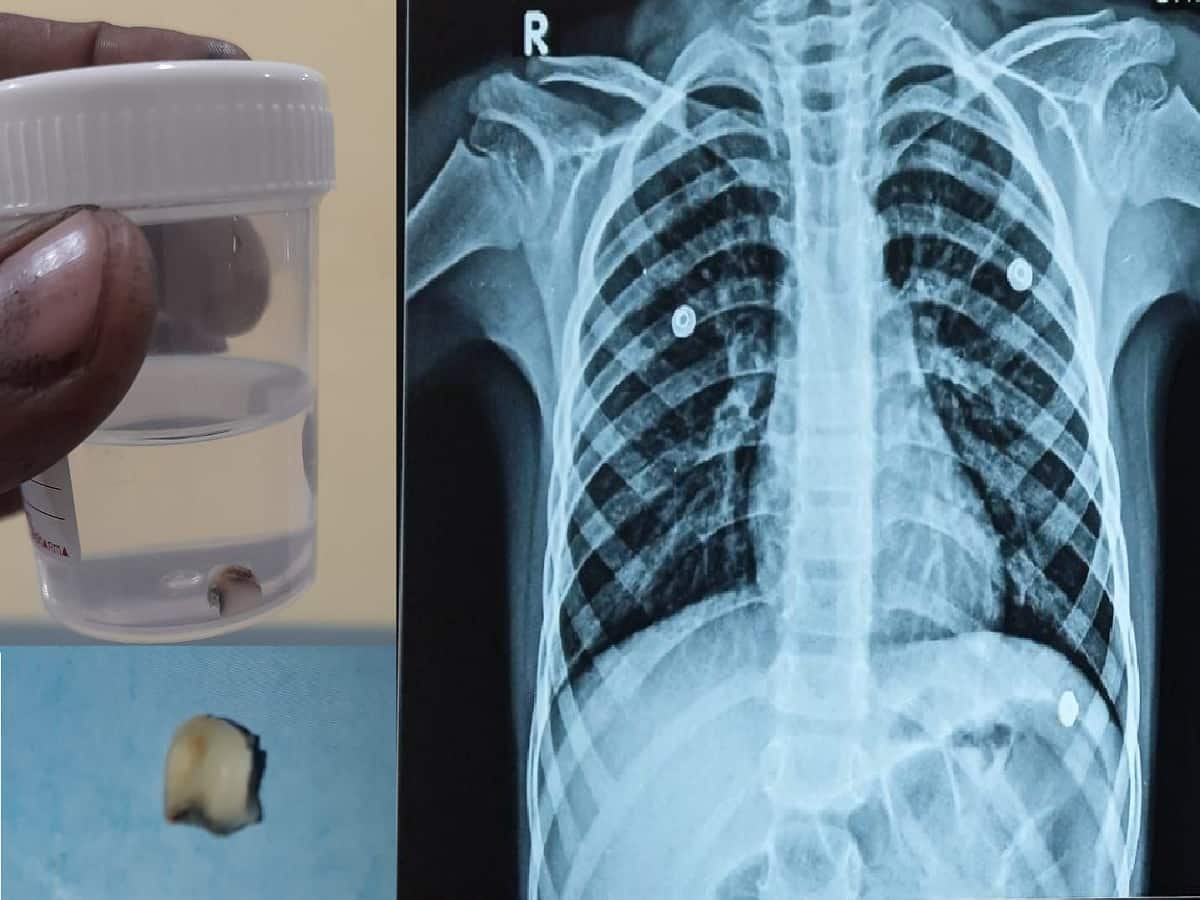 What is rigid bronchoscopy? The Tooth Removed From The Boy’s Right Lung
What is rigid bronchoscopy? The Tooth Removed From The Boy’s Right Lung
Foreign body aspiration is a common problem in kids, and it is also a common cause of accidental death in children. Small children can accidentally inhale food, liquid or an object into their windpipe and lungs. Dear parents, if your child’s baby tooth is loose, pull it out before he/she accidentally swallows it.
A 6-year-old boy from Boisar was admitted to a hospital after he accidentally swallows his loose tooth, which got stuck in his right lung leading to difficulty in breathing.
As stated by the boy’s parents, he struggled to breathe, became restless and couldn’t speak or eat after the accident. He was successfully operated by a team of doctors at Wockhardt Hospitals, Mira Road who removed the tooth from his right bronchus.
“On arrival in an emergency room (ER), the patient had symptoms such as breathing difficulty. Radiology confirmed the presence of the tooth on the right side of the bronchus. The patient was immediately taken to the operation theatre (OT) wherein he was scheduled for rigid bronchoscopy,” said Dr Sangamlal Pal ENT Consultant, Wockhardt Hospitals.
What is rigid bronchoscopy?
It is a procedure performed to remove the foreign body (FB) aspiration from bronchus, according to Dr. Pal.
He explained, “With the help of a rigid bronchoscope consisting of optical forceps and a camera that showed the tooth in the right bronchus. The tooth was removed after gaining access to the patient’s airway under general anesthesia. The airway and breathing improved immediately after the procedure. Post-operation, the patient was in the PICU, recovered well, and was discharged the next day.”
Not treating the child at the right time could have led to serious complications like death or permanent lung damage, Dr. Pal noted.
Small children more susceptible to foreign body aspiration: Know why
Foreign body aspiration, also known as pulmonary aspiration, occurs when an object enters the respiratory tract and becomes lodged in the airway or lungs, which is a potentially life-threatening emergency. It can cause difficulty breathing or choking. Cases of foreign body aspiration is most commonly in children 1 3 years of age, given their tendency to put foods and non-food objects in their mouth. Moreover, the position of their larynx, or voice box, makes them more susceptible to aspiration of foreign bodies into the airway.
Commonly aspirated foreign bodies in small children include edible items, such as a nut or raisin, or non-edible items such as a coin or marble. Balloons are also one of most frequently aspirated type of object, and it is estimated to account for roughly 29 percent of aspiration deaths in children.
Typically, immediate symptoms experienced after a foreign body aspiration are choking, coughing and difficulty breathing and/or abnormal breathing sounds. But the precise symptoms experienced, and severity of the condition depend on size and nature of the foreign body inhaled, where in the airways the object has settled, and the time since the object was inhaled.
In severe cases, foreign body aspiration can become life-threatening. Therefore, all cases of a foreign body in the airways should be treated as a medical emergency.









